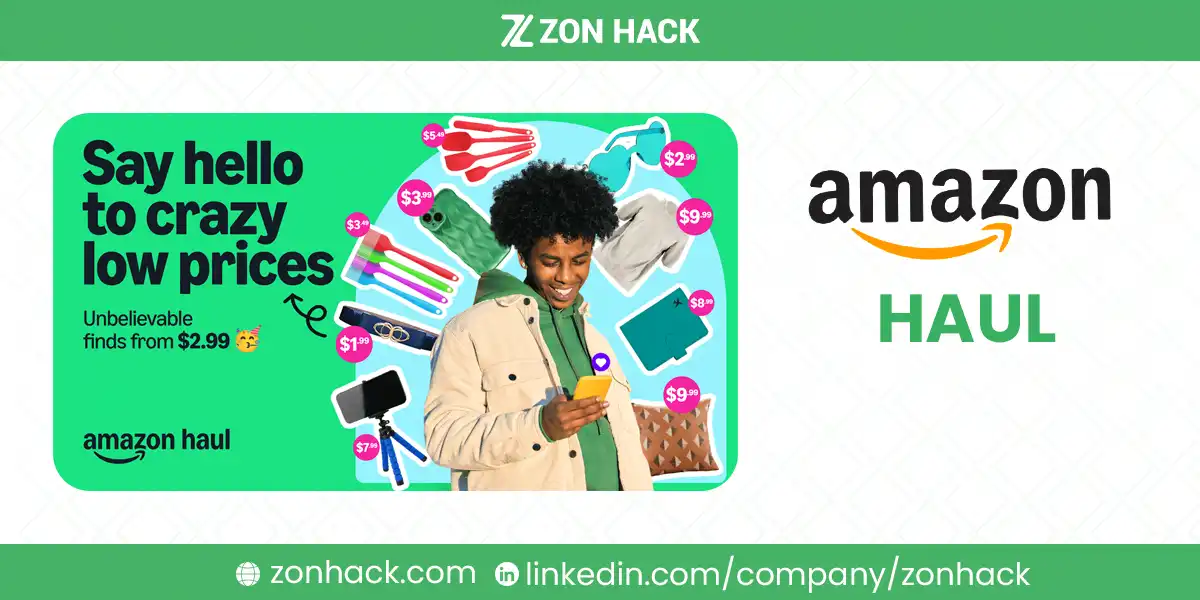Amazon Haul: A New Shopping Experience Modeled After Temu and AliExpress
Amazon recently launched “Amazon Haul,” a new section designed to mimic popular Asian e-commerce platforms like Timo, Shein, and AliExpress. This new feature introduces a distinctly different user experience tailored to attract a customer base used to the vibrant and deal-focused aesthetics of those platforms. Here’s a breakdown of Amazon Haul from the perspective of sellers and what it could mean for the future of Amazon’s marketplace.
What’s Amazon Haul?
Amazon Haul is a new feature within Amazon’s shopping app, aimed at providing customers with ultra-low-priced products across categories like electronics, apparel, home goods, and jewelry. Compared to regular Amazon, it’s different in these key aspects:
A Mobile-Only, Colorful Interface
Amazon Haul is optimized for mobile, much like Timo and Shein, requiring customers to scan a QR code to access the page on their devices. The design diverges sharply from Amazon’s usual format, featuring bright, eye-catching visuals that set it apart from Amazon’s traditional, minimalist layout. Lifestyle images with mixed backgrounds replace Amazon’s standard white-background images, contributing to a more lively, less formal presentation.

Lack of Advertising and New Features
Interestingly, Amazon Haul does not display any advertising on the page. This absence creates a streamlined browsing experience, encouraging users to engage directly with the products rather than being distracted by ads. Another novel feature is the ability for customers to chat directly with sellers, likely introduced after an onboarding process for specific sellers included in the Haul catalog. This feature encourages greater interaction between sellers and buyers, fostering a sense of trust and accessibility.
Limited Product Information
Unlike Amazon’s main site, which typically includes detailed bullet points and specifications, Amazon Haul provides minimal product information—limited mainly to the title, price, and shipping details. This sparse approach aligns with Amazon’s goal to offer a quick, no-fuss shopping experience, similar to those of competitors. Scrolling through the Haul catalog feels like an endless feed, automatically loading more products as users reach the bottom of the page, a familiar setup for users of Timo or AliExpress.
Collections and Low-Priced Products
The Amazon Haul page also features various themed collections with categories like “Trending,” “Social Faves,” and “Time to Treat.” Most products in Amazon Haul are low-cost, falling under $10. This price structure caters to a budget-conscious audience and aligns with the value-driven approach popularized by other discount e-commerce platforms.
Potential Impacts on Sellers
The introduction of Amazon Haul presents a mixed bag for sellers. While it could attract a wider customer base, Amazon seems to have launched this feature without adequately preparing its sellers. Sellers could have benefited from advance notice and guidance on creating a sub-catalog geared toward budget shoppers, potentially resulting in a more robust selection tailored to this new market. Instead, Amazon appears to have independently curated the Haul collection, including low-priced items without extensive seller input.
So, if you are an Amazon seller who’s looking to get a spot on Haul, the best course of action right now would be to stay tuned for updates from Amazon, especially on the official announcement forum and in seller newsletters. Additionally, focusing on offering competitively priced, quality products could enhance visibility and increase the chances of being noticed for programs like Haul.
Future Directions for Amazon Haul
It’s unclear where Amazon Haul is headed, but there’s speculation it could evolve into a significant new sales channel on Amazon’s platform. There may be future updates involving better integration between sellers and Amazon management, potentially providing sellers with more direct involvement in curating their listings within the Haul framework.
Amazon Haul appears to be an experimental shift, merging Amazon’s vast product network with a more social shopping experience. Whether this bold approach will resonate with customers remains to be seen, but it certainly signals Amazon’s attempt to compete directly with popular discount platforms by adapting their successful features.
Have questions regarding selling on Amazon? Email your questions to [email protected]




